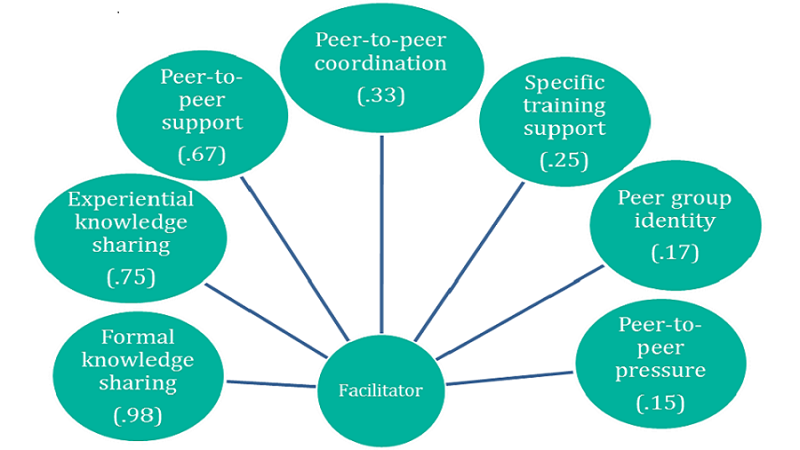Ideas for reflection
The study helped to identify important underlying lessons about peer learning. Some of these spoke to the importance of remembering that peer learning is a specific tool and needs to be adopted when appropriate and possible. Clarity about the goals of the peer learning exercise is thus vital.
| Fields in which peer learning is undertaken |
 |
- Peer learning can be a valuable approach to generate and disseminate and even a motivational tool in many public sector reform areas— from civil service to public financial management (PFM) and more (see the figure above).
- Peer learning is also valuable in fostering learning about many dimensions of reform (technical, political, managerial) but the most value is in facilitating sharing of tacit knowledge among peers (about political, managerial and process issues in reform) (see the figures below)
| Learning goals specified by peer learning facilitation entities and peer learners | |
| Peer ‘learning’ goals of facilitating entities | Actual learning gains of peer learners |
 |
 |
- Peer learning tends to work best when targeted at a specific sector or area, like civil service reform or anti-corruption or public financial management; especially when a community of practice already exists to mobilise peers to participate in the learning process.
- Given that peer learning is a means and not an end, one must have a theory of change about how peer learning is expected to contribute to reform results. This guides peer review process design and is important in maintaining interest and motivation in the process.
- There are many ways to fill knowledge gaps in reform. Peer learning should be used for the learning it is best suited to (transfer of tacit knowledge between practitioners).
- Peer engagement is valuable to foster more than learning (like professional networking or support).
- If you want to bring peers together, make sure you are clear about who you are targeting. Peers are individuals, not organisations, so target real people—and make sure you can describe them before you start your work.
- The more effective peer learning initiatives are clear about what the peers are expected to learn from each other. This does not mean they are prescriptive, but they can describe whether the initiative is about disseminating technical, process or other knowledge. This clarity helps in attracting peers and in designing the peer learning process.
- The more effective initiatives are also clear about the modalities they will adopt—from a wide range of tools at their disposal—and how peers will engage with each other in the learning process. This again helps in attracting peers and designing process.
- It is vital to be real about how hard peer learning can be. Peers need political freedom to learn and engage, and logistical challenges can undermine the entire process. Make sure you are paying attention to the political and logistical challenges at all times.
Related Publications
